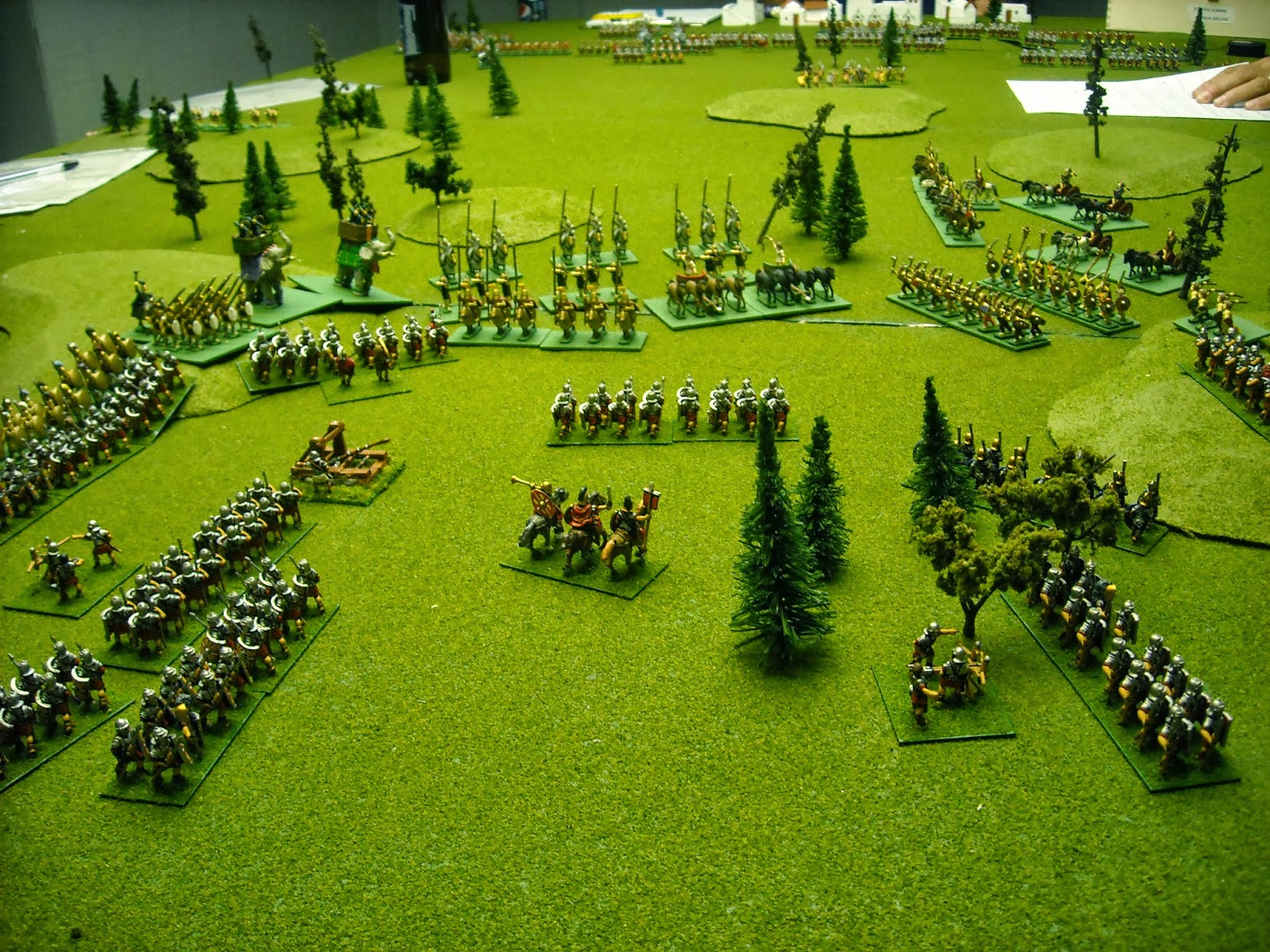Tuesday, October 15, 2013
Friday, October 4, 2013
Early Spring 1777 - New Jersey (hypothetical)
Colonel Ebenezer Driscoll’s American brigade stomped out of
their winter quarters in search of some rations and shoes. General Howe
dispatched Brigadier Dirk Patch to spoil the American’s excursion and keep them
hungry and barefoot.
The two columns met near Dricut’s Store on a cold sunny
spring day.
Major Scudbucker had been stripping Farmer Northey of what
was left of his larders when word arrived of the British advance. He sent a
courier thundering (actually trotting, the horse was too lean to do much more)
to Driscoll and called his men into formation. Captain Forrester’s Connecticut
Light Infantry stretched out to cover the American south flank in an open wood
lot. He then deployed his two companies of Pennsylvania Continentals behind
fences and outbuildings on Northey’s farm supported by a section of 3-pounders.
Scudbucker deployed his German Flats militia behind and in support of the guns.
Driscoll had personal control of the rest of his small
command. He deployed his Connecticut Line to cover the American north flank in
thick woods. The 5th Company of the 4th New York Line
deployed on an open hill to the right of the Nutmeggers. His small detachment
of riflemen moved to a copse of walnut trees between the hill and Northey’s
farm. Coming up from the rear, where they had been “guarding” (more like
looting) the already filled supply wagons, were the 3rd and 4th
companies of the 4th New York.
Patch deployed his force in a long thin line opposite the
Americans. Quickly the two forces were heavily engaged. The 42nd
Highlanders led down the farmer’s trail with a 6-pounder lumbering by their
side. A slugging match ensued between
them and the American riflemen on one side and the First Pennsylvania on the
other. The uneven struggle fixed the
Americans’ attention to fatal consequences.
Major Jonathan Dimsdale led the 33rd Regiment of
Foot sharply through the woods and into line in support of, and just north of,
the Highlanders. From behind the Highlanders a company of Marines moved into
the farm building opposite the Pennsylvanians and took up shooting positions
under cover of the thick log walls. This, despite the New Yorkers deploying in
support of the Pennsylvanians and delivering a measured volley.
The tide of battle, a battle only 15 minutes old, now turned
distinctly in favor of the redcoats. While the Highlanders fell back the 33rd
decimated the riflemen with rapid volleys, forcing them to likewise retire. On
the far northern flank the dismounted 17th Light Dragoons started to
drive the Connecticut lIne through the woods, though stubbornly opposed.
At the same time three companies of grenadiers approached
Scudbucker’s center. The Pennsylvanians
did their best, standing stoically behind Northey’s fences but the balls
arrived with much too great a regularity. One by one the Continentals fell out
of line, dead, wounded, or just done in by the ferocity of the British fire.
The cannons banged away but mostly ineffectually, getting only a single telling
canister shot in that beheaded a poor lieutenant of the 23rd Foot and
cut an entire section in half.
The coup de main in Scudbucker’s area was when the
Grenadiers of the 5th Foot moved forward, bayonets glittering in the
sunshine. The Americans had had enough.
On the far south flank the Light company of the 10th
Foot methodically cut up the American Light Infantry and then chased away the
militia, bravely led forward by Captain Van Eyken, with a deliberate fire by
platoons.
With the riflemen and the Pennsylvanians falling
back it was now the turn of the 5th New York company to be
decimated
on their exposed position on the naked knob.
In apoplexy Driscoll watched his command melt away under the
British fire. Captain Iverson’s company of New Yorkers and Miller’s Connecticut
line, from cover of woods west of Northey’s farm, checked the British pursuit
long enough for the remnants of the American brigade to slink away. All in all
the Americans lost 211 men out of only 1120 engaged. Another 55 simply
disappeared into the countryside, never to return to their units. Patch’s regulars, by contrast, brought 1400
men to the fray and suffered a bare 96 men lost to all causes.
This battle was fought in 25mm in January 2013. We use A Continent in the Balance rules.
Subscribe to:
Comments (Atom)












